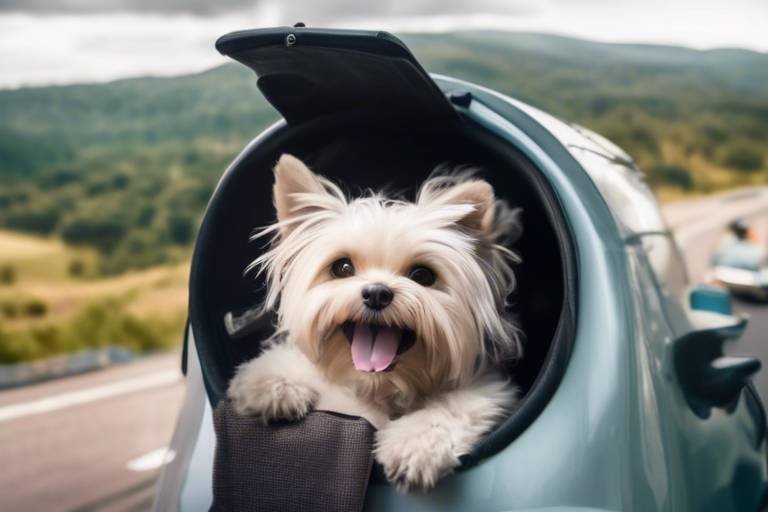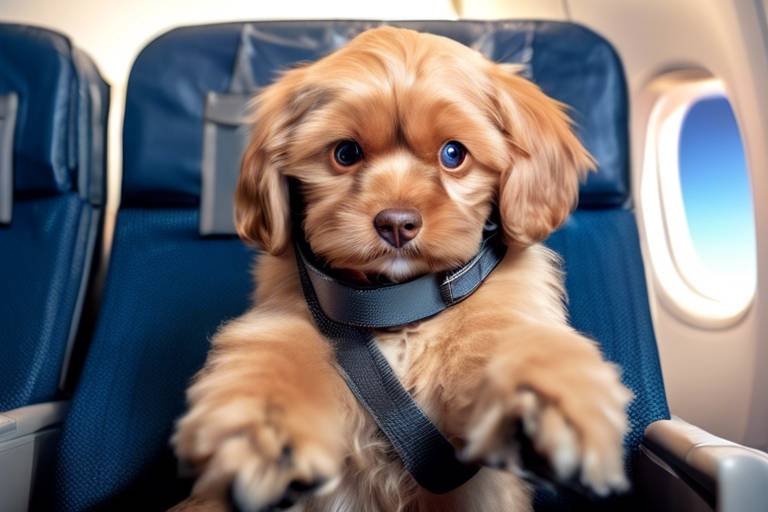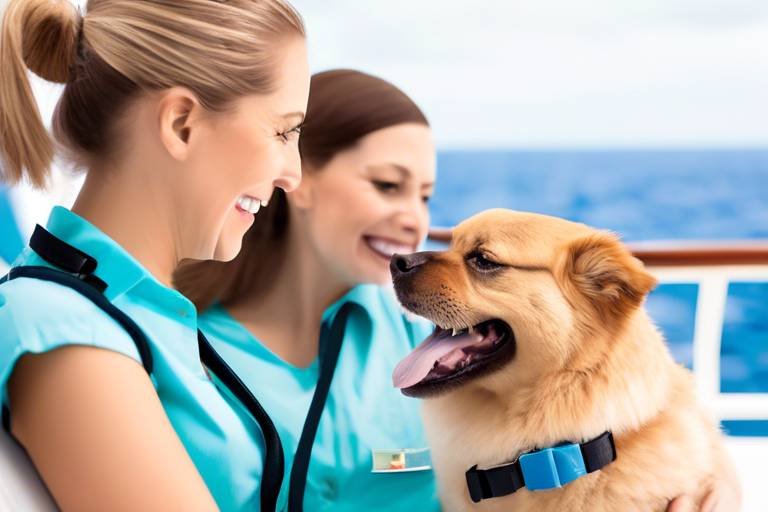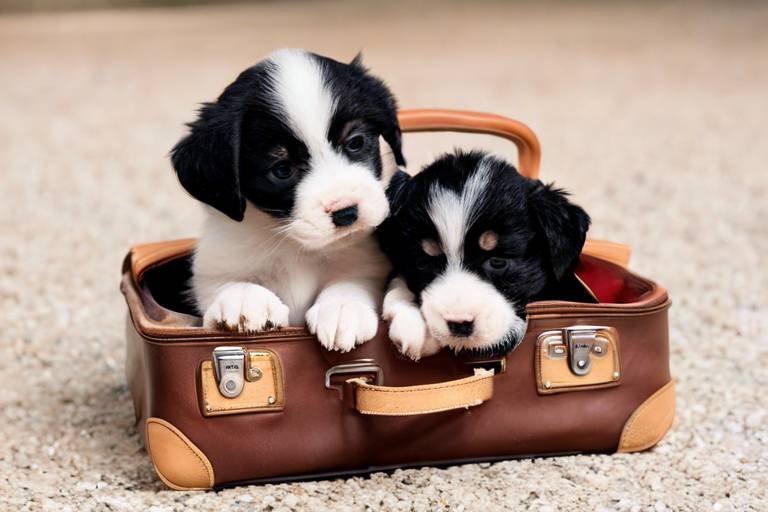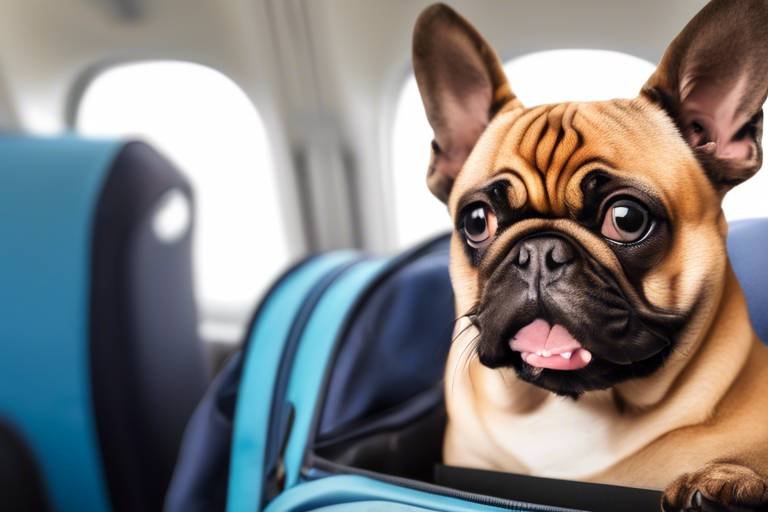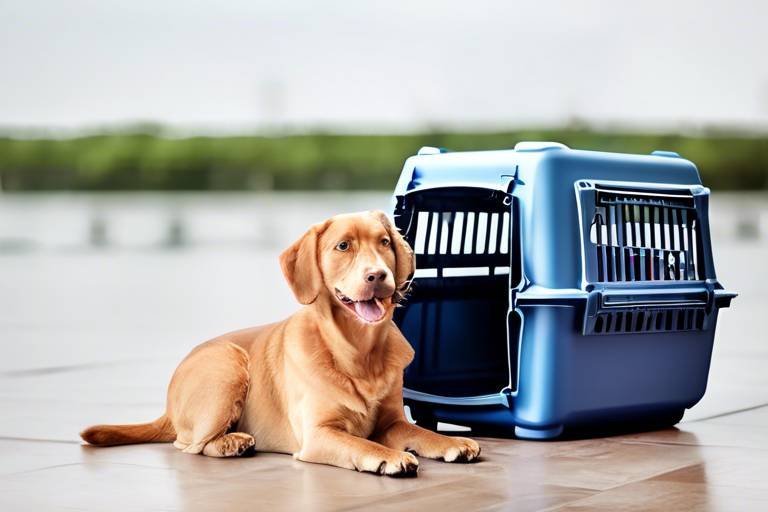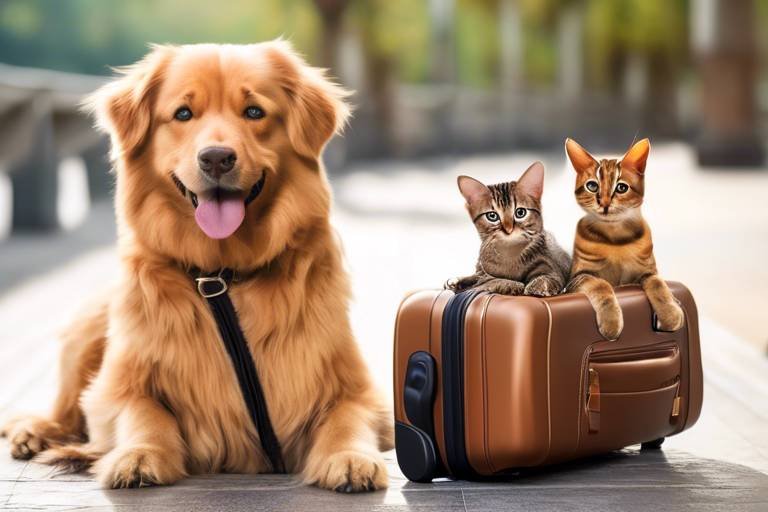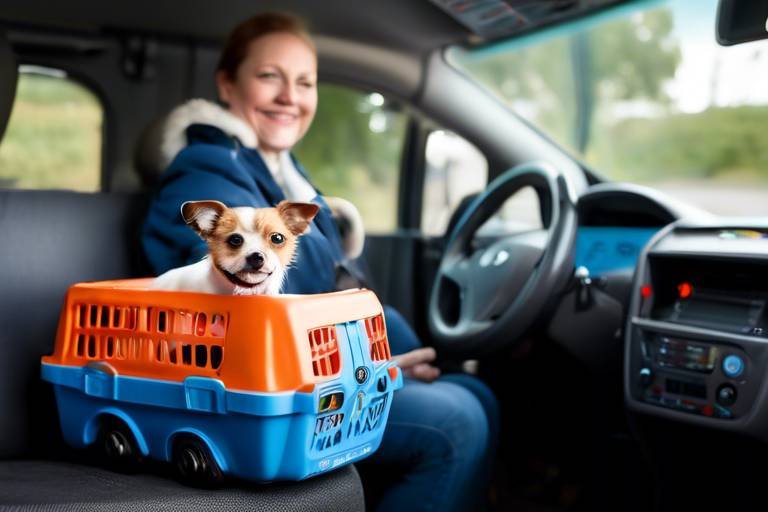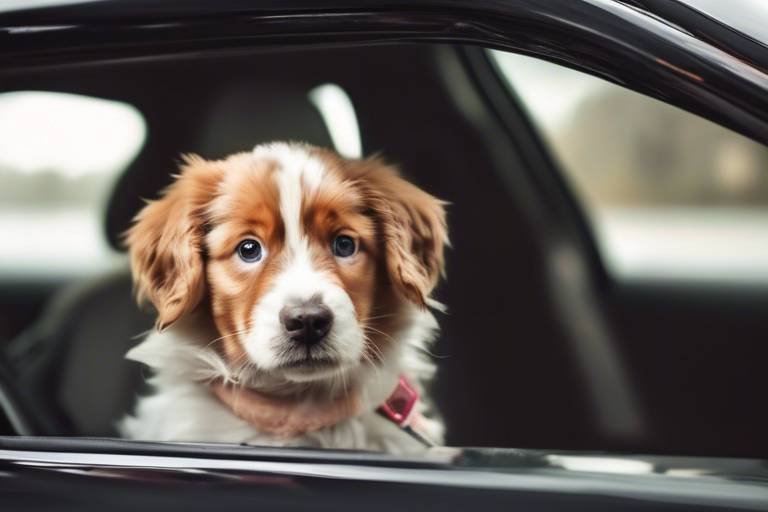Tips for Making Travel Fun for Your Pet
Traveling with your furry friend can be one of the most rewarding experiences, but it can also come with its fair share of challenges. Imagine embarking on an adventure with your pet, exploring new places, and creating unforgettable memories together. However, to ensure that both you and your pet have a fantastic time, it's essential to prepare adequately and keep your pet engaged throughout the journey. After all, a happy pet makes for a happy trip! This article will guide you through effective strategies to make traveling enjoyable for your pet, from essential preparations to fun activities that will keep their tails wagging.
Proper preparation can make all the difference in ensuring a smooth travel experience for your pet. Think about it: just like you wouldn't head out on a long road trip without packing snacks and entertainment, your pet needs a little planning too! Start by gathering all the essentials your pet will need during the journey. This includes food, water, bowls, leashes, waste bags, and any medications they might require. Additionally, familiarize your pet with the travel routines you’ll be following. If you're taking a car trip, take your pet on shorter rides to help them get used to being in a vehicle again. This small step can reduce anxiety and make the longer journey feel less daunting.
When it comes to traveling with pets, selecting a comfortable and secure carrier is crucial for your pet's travel comfort. A well-chosen carrier can be a cozy den for your pet, providing them with a sense of security during the journey. Consider your pet’s size, personality, and preferences when selecting a carrier. For example, if your pet likes to stretch out, a larger crate or carrier might be necessary. On the other hand, if they prefer snug spaces, a smaller carrier could be the ticket. Make sure the carrier is well-ventilated and easy to clean, as accidents can happen!
Training your pet to feel comfortable in their carrier can significantly reduce anxiety during travel. Think of the carrier as their portable home; the more familiar it feels, the more relaxed they will be. Start by introducing the carrier at home. Leave it open in a quiet space and encourage your pet to explore it on their own. You can use treats or their favorite toys to make it an inviting space. Over time, gradually close the door for short periods while they are inside, rewarding them with praise and treats. This process will help them associate the carrier with positive experiences.
Using treats and praise can encourage your pet to enter and stay calm in their carrier. Positive reinforcement is a powerful tool in training; it helps your pet understand that good things happen when they behave well. Each time your pet enters the carrier, shower them with affection and a tasty treat. This strategy not only reinforces good behavior but also builds a stronger bond between you and your pet. Remember, patience is key! Every pet learns at their own pace, so be sure to celebrate small victories along the way.
Including familiar toys or blankets can help your pet feel more secure in their carrier. Just like a child might cling to their favorite stuffed animal, your pet will appreciate having something that smells like home. A beloved blanket or toy can provide comfort and reduce travel-related stress. Before you leave, place these items in the carrier so your pet can snuggle up to them during the journey. This small gesture can make a world of difference in how your pet copes with the changes around them.
Ensuring your pet's health and safety during travel is paramount. Before embarking on your journey, schedule a vet check-up to make sure your pet is fit for travel. Discuss any concerns you may have and ensure their vaccinations are up to date. This is especially important if you are traveling to different states or countries. Some places may have specific requirements for pets, so do your research beforehand. Having your pet microchipped or ensuring they wear a collar with identification tags is also a good idea, just in case they get lost during the trip.
Keeping your pet entertained on the road can enhance their travel experience. Just like us, pets can get bored during long trips, which might lead to restlessness and anxiety. To prevent this, consider bringing along a variety of engaging activities. Interactive toys, for instance, can provide mental stimulation and keep your pet occupied during long stretches of travel. Look for toys that encourage problem-solving or those that dispense treats when played with. These can be a fantastic distraction and can help your pet feel more at ease.
Interactive toys can be a game-changer for keeping your pet entertained during travel. They not only provide mental stimulation but also help burn off some of that pent-up energy. Look for toys that are durable and easy to clean, as they may get a bit messy during your adventures. Some popular options include puzzle toys, treat-dispensing balls, and even squeaky toys that can keep your pet engaged for hours. Just be sure to rotate the toys to keep things fresh and exciting!
Taking regular breaks allows your pet to stretch, relieve themselves, and explore new environments. Think of these breaks as mini-adventures within your journey! Plan your route to include pet-friendly stops, such as parks or rest areas where your pet can roam and get some fresh air. Aim for a break every couple of hours, or whenever you feel your pet needs a little downtime. This not only benefits your pet but also gives you a chance to stretch your legs and enjoy the scenery!
- How can I prepare my pet for a long road trip? Start by taking your pet on short car rides to acclimate them to travel. Ensure you have all necessary supplies and consider their comfort during the journey.
- What should I do if my pet gets anxious while traveling? Use calming techniques such as playing soothing music, offering treats, or using anxiety wraps to help them feel more secure.
- Are there any travel restrictions for pets? Yes, certain states and countries have specific regulations regarding pet travel. Always check the requirements for your destination beforehand.
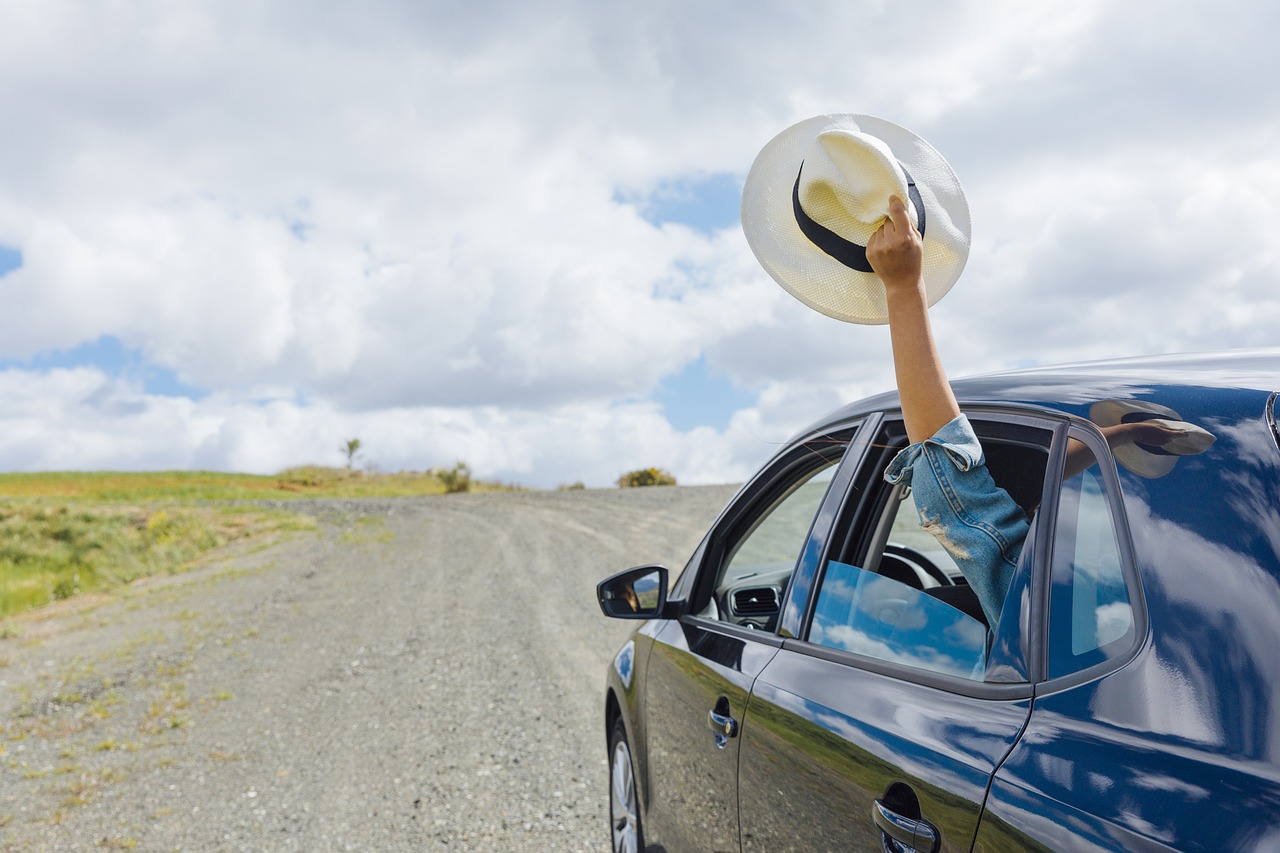
Preparation is Key
Discover effective strategies to ensure your pet enjoys traveling as much as you do, from preparation to activities that keep them engaged and happy throughout the journey.
When it comes to traveling with your furry friend, preparation is the secret sauce that can transform a potentially stressful experience into a delightful adventure. Just like you wouldn't head out on a road trip without packing your essentials, your pet deserves the same level of consideration. The first step is to gather all the necessary items that will keep your pet comfortable and entertained during the journey. This includes their food, water, bowls, leash, waste bags, and, of course, their favorite toys. It's crucial to plan ahead to avoid any last-minute scrambles that could lead to anxiety for both you and your pet.
Once you've gathered the essentials, the next step is to familiarize your pet with the travel routine. If you're planning a long car ride, take your pet on shorter trips leading up to the big day. This will help them acclimate to being in a vehicle and reduce any nervousness they might feel. During these practice runs, observe how your pet reacts. Do they settle down quickly, or do they seem restless? This insight will help you tailor your travel strategy to suit their needs.
Additionally, it's important to consider your pet's health before hitting the road. Schedule a visit to the vet to ensure they are fit for travel, especially if you're going on a long trip. Ask about any necessary vaccinations or medications that might be required, particularly if you're traveling to a new environment. Keeping your pet healthy and happy should always be a top priority. Remember, a little preparation can go a long way in making your travel experience enjoyable for both you and your beloved companion.
Selecting a comfortable and secure carrier is crucial for your pet's travel comfort. Explore tips on choosing the best carrier for your pet's size and personality.
Training your pet to feel comfortable in their carrier can reduce anxiety during travel. Discover effective techniques to help your pet adapt to their new travel space.
Using treats and praise can encourage your pet to enter and stay calm in their carrier. Learn how to implement positive reinforcement strategies effectively.
Including familiar toys or blankets can help your pet feel more secure in their carrier. Find out how these items can ease travel-related stress.
Ensuring your pet's health and safety during travel is paramount. Understand the importance of vet check-ups and vaccinations before embarking on your journey.
Keeping your pet entertained on the road can enhance their travel experience. Explore various activities that can help maintain their interest and happiness.
Interactive toys can provide mental stimulation and keep your pet occupied during long trips. Discover the best types of toys for travel.
Taking regular breaks allows your pet to stretch, relieve themselves, and explore new environments. Learn how to schedule these breaks effectively for a smoother journey.
- What should I pack for my pet when traveling? Make sure to include food, water, bowls, a leash, waste bags, and their favorite toys.
- How can I help my pet feel comfortable in a carrier? Gradually introduce them to the carrier with positive reinforcement and familiar items.
- Should I take my pet to the vet before traveling? Yes, it's essential to ensure they are healthy and up-to-date on vaccinations.
- How often should I take breaks during a long trip? Plan for breaks every 2-3 hours to allow your pet to stretch and relieve themselves.

Choosing the Right Carrier
When it comes to traveling with your furry friend, selecting the right carrier is crucial. Think of it as choosing a cozy little home away from home for your pet. A well-chosen carrier not only ensures your pet's comfort but also provides you with peace of mind during your travels. So, how do you go about finding that perfect fit? First, consider your pet's size. If your dog is a hefty golden retriever, a tiny carrier isn’t going to cut it. On the flip side, a smaller pet like a chihuahua might feel lost in a large space. Aim for a carrier that allows your pet to stand up, turn around, and lie down comfortably.
Next, let’s talk about materials. You’ll want something that’s both durable and easy to clean. After all, accidents happen, especially on long trips! Look for carriers made from sturdy fabrics or hard plastic that can withstand a bit of rough handling. Additionally, ventilation is key. Your pet needs fresh air to stay calm and comfortable, so opt for carriers with plenty of ventilation holes or mesh panels.
Now, let’s not forget about your pet’s personality. Is your little buddy a curious explorer or a shy wallflower? If your pet loves to see the world, a carrier with a transparent top might be ideal. On the other hand, if they’re a bit anxious, a more enclosed carrier could help them feel secure. It’s all about finding the right balance between comfort and exploration!
Here’s a quick table to summarize some important aspects to consider when choosing a carrier:
| Feature | Considerations |
|---|---|
| Size | Ensure enough space for your pet to stand, turn, and lie down. |
| Material | Opt for durable, easy-to-clean materials. |
| Ventilation | Look for carriers with mesh panels or ventilation holes. |
| Personality Fit | Choose a design that suits your pet’s comfort level. |
Lastly, don't forget to check for any travel regulations or guidelines, especially if you’re flying. Airlines often have specific requirements regarding pet carriers, so it’s best to do your homework beforehand. Choosing the right carrier is not just about convenience; it's about ensuring your pet feels safe and happy during your adventures together. With the right preparation, your pet will be just as excited about the journey as you are!
Q: How do I know if my pet will fit in the carrier?
A: Measure your pet while they’re standing, lying down, and sitting. Compare these dimensions with the carrier's size to ensure a good fit.
Q: Can I use a regular bag as a pet carrier?
A: While some bags might work in a pinch, it's best to use a designated pet carrier that meets safety and comfort standards.
Q: Should I let my pet explore the carrier before the trip?
A: Absolutely! Allowing your pet to explore the carrier at home can help them feel more comfortable and less anxious when it’s time to travel.
Carrier Training
When it comes to making your pet feel comfortable during travel, is an essential step that cannot be overlooked. Just like a child needs to get used to a new school, your furry friend must adapt to their travel space. The process can be both rewarding and fun, but it requires patience and consistency. Start by introducing the carrier to your pet in a calm environment, allowing them to explore it freely. Place it in a familiar space, like the living room, and let them sniff around. This will help them associate the carrier with positive experiences.
Once your pet seems comfortable around the carrier, you can begin to encourage them to enter it. Use treats or their favorite toy to lure them inside. This method not only makes the carrier seem inviting but also creates a sense of curiosity. You might find that your pet is more willing to hop in if you make it a game. For instance, toss a treat inside and see how quickly they can retrieve it. Positive reinforcement is key here—praise your pet enthusiastically whenever they step inside the carrier.
As your pet becomes more accustomed to the carrier, start closing the door for short periods while they are inside. This helps them get used to the idea of being confined. Initially, keep these sessions brief, just a few minutes, and gradually increase the time as they become more comfortable. If your pet shows signs of distress, don’t force them—this could lead to negative associations. Instead, take a step back and try again later.
Another effective technique is to incorporate familiar items into the carrier. Adding a favorite blanket or toy can provide a sense of security for your pet. It’s like taking a piece of home with them! Familiar scents can significantly reduce anxiety and help them feel more at ease. You might even consider placing an item of your clothing inside, as your scent can be incredibly comforting.
Here's a quick overview of the steps involved in carrier training:
| Step | Description |
|---|---|
| Introduce the Carrier | Allow your pet to explore the carrier in a safe space. |
| Use Treats and Toys | Encourage your pet to enter the carrier with treats and toys. |
| Gradual Confine | Close the door for short periods, gradually increasing the time. |
| Familiar Items | Add a blanket or toy to make the carrier feel like home. |
Remember, the goal is to create a positive and stress-free experience for your pet. With time and patience, your pet will learn that the carrier is a safe space, making travel much easier for both of you. So, why not start today? Your next adventure awaits, and with the right preparation, your pet can enjoy the journey just as much as you do!
Q: How long does it take to train my pet to use the carrier?
A: The time it takes can vary depending on your pet's personality and previous experiences. Some pets may adapt quickly, while others may need a few weeks of consistent training.
Q: What if my pet refuses to enter the carrier?
A: If your pet is hesitant, try to make the carrier more appealing by using treats or toys. Avoid forcing them inside, as this can create a negative association.
Q: Can I leave the carrier out all the time?
A: Yes! Leaving the carrier out can help your pet view it as part of their environment, making them more comfortable when it’s time to travel.
Positive Reinforcement
When it comes to ensuring your pet feels at ease in their carrier, is your best friend. Think of it as a secret weapon in your travel toolkit! By rewarding your furry companion for calm behavior, you can create a positive association with their carrier. This means less anxiety for them and more peace of mind for you during your travels. But how exactly do you implement this strategy effectively? Let's dive into some practical tips!
First off, it's essential to understand that every pet is unique. What works for one might not work for another. Therefore, observation is key. Pay attention to your pet's behavior and preferences. For instance, if your dog loves treats, use that to your advantage. Start by placing their favorite treats inside the carrier, encouraging them to step in. Once they do, shower them with praise! This simple act of encouragement can significantly boost their confidence.
Additionally, you can create a reward schedule to reinforce good behavior. Consider the following approach:
| Behavior | Reward |
|---|---|
| Entering the carrier | Favorite treat |
| Staying calm inside | Praise and petting |
| Exiting calmly | Playtime |
By setting clear expectations and rewards, your pet will start to associate their carrier with good experiences. It's like creating a little game where they can win prizes! Moreover, consistency is crucial. Make it a daily routine to practice getting in and out of the carrier, rewarding them every time they comply. This not only builds familiarity but also strengthens your bond.
Another fantastic strategy is to incorporate playtime into the training process. After a successful session in the carrier, take a few moments to play with your pet. This not only reinforces the idea that good things happen around the carrier but also allows them to release any pent-up energy. Think of it as a fun little reward for their hard work!
Lastly, don't forget to be patient. Training takes time, and every pet progresses at their own pace. If your furry friend seems hesitant at first, that's perfectly normal. Just keep the atmosphere light and fun, and avoid any negative reactions. Remember, the goal is to make the carrier a safe haven rather than a source of stress.
In conclusion, using positive reinforcement can transform your pet's travel experience from daunting to delightful. By rewarding good behavior, creating a structured reward system, and incorporating play, you can ensure that your pet feels safe and happy in their carrier. So, pack those treats and get ready for some fun-filled travel adventures!
- How long should I train my pet to use the carrier? It's best to start training several weeks before your travel date. Short, frequent training sessions are more effective than long, infrequent ones.
- What if my pet refuses to enter the carrier? Try placing their favorite toys or blankets inside to entice them. Patience is key; don’t rush the process.
- Can I use toys as rewards instead of treats? Absolutely! If your pet is more motivated by play, use their favorite toys as rewards during training.
Familiar Items
When it comes to making your pet feel at home while traveling, can work wonders. Just like you might pack your favorite pillow or a cozy blanket for a trip, your furry friend will appreciate having their own comforting belongings. Think about it: how would you feel if you were suddenly whisked away to an unfamiliar place without anything that reminded you of home? Pets can experience anxiety too, and bringing along some of their favorite items can significantly ease their stress during travel.
Consider packing a few key items that hold sentimental value for your pet. Here are some suggestions:
- Favorite Blanket: A soft, familiar blanket can provide warmth and a sense of security. It smells like home and can help your pet feel relaxed in their new environment.
- Comfort Toys: If your pet has a favorite toy, especially one that they cuddle with, bring it along. It can serve as a source of comfort and familiarity, helping them to feel less anxious.
- Snacks and Treats: Familiar treats can be a great way to keep your pet's spirits up during the journey. They can also serve as positive reinforcement when your pet behaves well in their carrier.
Incorporating these familiar items into your travel plans not only creates a sense of comfort for your pet but also helps to maintain their routine. Imagine how much more at ease they will feel when they can snuggle up with their beloved blanket or chew on their favorite toy during rest stops. It's like bringing a piece of home with you wherever you go!
Additionally, having these items on hand can provide a distraction during long stretches of travel. Instead of focusing on the new and potentially overwhelming environment, your pet can engage with their toys or relax on their blanket, turning a potentially stressful situation into a cozy adventure. Remember, the goal is to create a positive travel experience for your furry friend, and familiar items are key players in achieving that.
Q: What items should I bring for my pet when traveling?
A: It's best to bring a favorite blanket, comfort toys, and familiar snacks or treats. These items can help ease anxiety and provide comfort during the journey.
Q: How can I help my pet adjust to their carrier?
A: Gradually introduce your pet to the carrier by allowing them to explore it at home. Use treats and positive reinforcement to create a positive association with the carrier.
Q: Is it necessary to take breaks during long trips?
A: Yes! Frequent breaks are essential for your pet to stretch, relieve themselves, and explore new surroundings. It helps keep them engaged and happy during the journey.
Health and Safety Considerations
When it comes to traveling with your beloved pet, health and safety should always be your top priority. Just like you wouldn't embark on a long journey without ensuring you're in good shape, your furry friend deserves the same consideration. Before you hit the road, it's essential to schedule a visit to the veterinarian. This check-up will ensure your pet is fit for travel and up-to-date on all necessary vaccinations. After all, a healthy pet is a happy pet!
Additionally, consider the specific needs of your pet. For example, if you're traveling during the summer months, be aware of the risks of heatstroke, especially for breeds that are more susceptible to heat. On the other hand, if you're heading into colder climates, make sure your pet is adequately protected from the elements. A well-fitted pet jacket can make all the difference in keeping them warm and cozy.
Here's a quick checklist of health and safety considerations to keep in mind:
- Vet Check-Up: Ensure your pet is healthy and has all vaccinations updated.
- Microchip and ID Tags: Make sure your pet has proper identification in case they get lost.
- Travel Insurance: Consider investing in pet travel insurance for peace of mind.
- Medication: If your pet requires medication, pack enough for the duration of your trip.
Don’t forget about the importance of hydration! Just like us, pets can become dehydrated during travel. Always keep a portable water bowl handy and offer your pet water during breaks. If you're traveling by car, make sure your pet is secured in a safe manner, whether that’s in a carrier or with a pet seatbelt. This not only keeps them safe but also minimizes distractions for the driver.
Lastly, familiarize yourself with the pet policies of your destination. Some hotels and accommodations have specific rules regarding pet sizes, breeds, and the number of pets allowed. Knowing this information in advance can save you from any last-minute surprises and ensure a smooth transition when you arrive at your destination.
1. How can I prepare my pet for a long road trip?
To prepare your pet for a long road trip, start with short car rides to acclimate them to the vehicle. Gradually increase the duration of these trips, and ensure they have a comfortable space in the car. Bringing along familiar items, such as their favorite blanket or toy, can also help ease any anxiety.
2. What should I do if my pet gets car sick?
If your pet tends to get car sick, consult your veterinarian for advice. They may recommend specific medications or strategies, such as feeding your pet a light meal before travel or using a pet seatbelt to keep them secure and calm.
3. Are there any specific travel considerations for exotic pets?
Yes, exotic pets often have unique needs. Research the regulations for traveling with exotic pets in advance, as some species may require special permits or documentation. It's also crucial to ensure their habitat is secure and comfortable during travel.
4. How often should I take breaks during a long trip?
It's recommended to take breaks every 2-3 hours during a long trip. This allows your pet to stretch their legs, relieve themselves, and hydrate. Frequent stops can make the journey more enjoyable for both you and your pet.
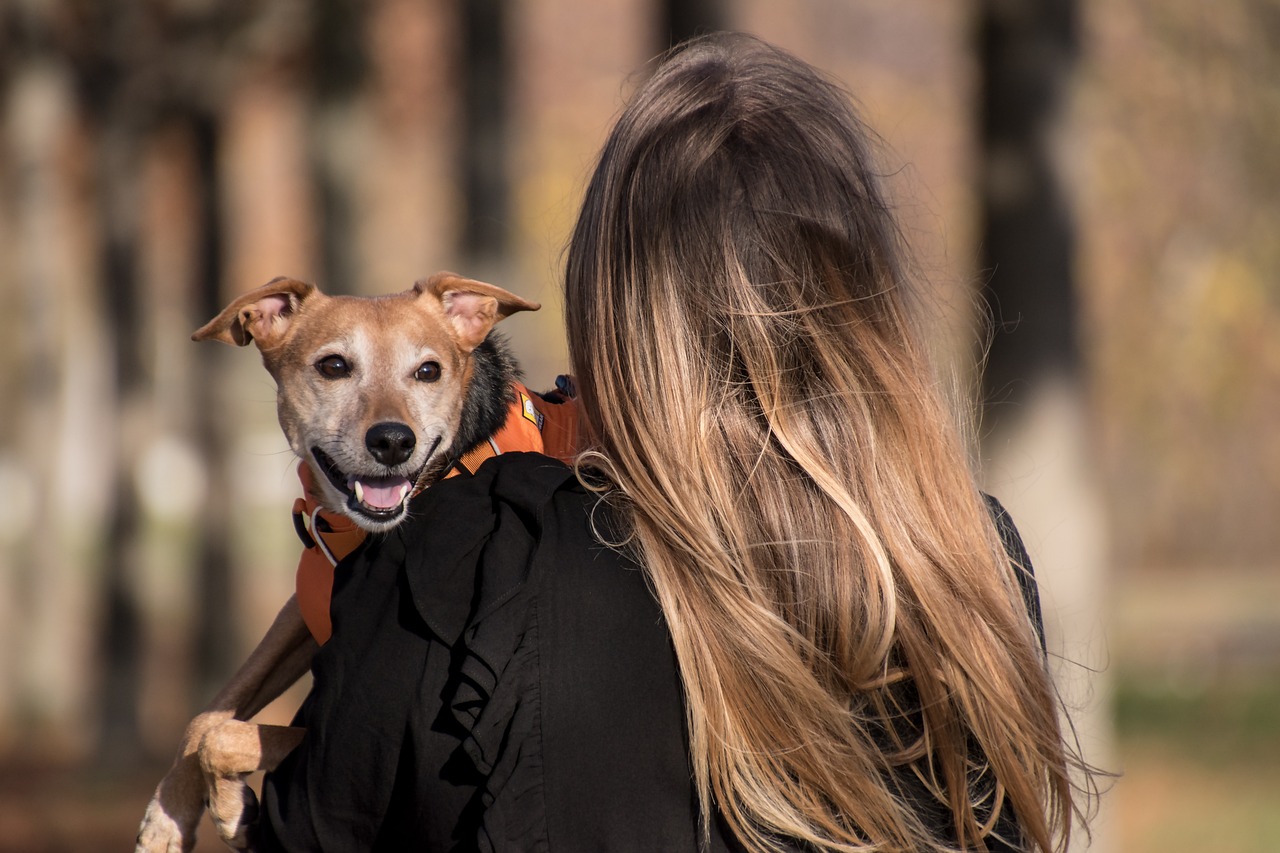
Engaging Activities During Travel
Traveling with your furry friend can be an unforgettable experience, but keeping them entertained during the journey is essential to ensure they enjoy the ride just as much as you do. Imagine being stuck in a car for hours without anything to do—it's a recipe for boredom and anxiety! To avoid this, it’s crucial to engage your pet with fun activities that stimulate their minds and keep them happy. One great way to do this is by incorporating interactive toys into your travel kit. These toys are designed to challenge your pet mentally and physically, making them perfect for long trips. Think of them as the equivalent of a good book or a puzzle for your pet; they’ll keep your furry friend occupied and entertained while you focus on the road.
When selecting interactive toys, consider your pet's preferences and needs. For instance, puzzle toys that dispense treats can keep dogs and cats busy for hours. They not only provide entertainment but also encourage problem-solving skills. Additionally, toys that can be filled with your pet’s favorite snacks can be a great way to keep their spirits high during the journey. Just remember to rotate the toys to keep things fresh and exciting—nobody likes playing with the same old thing every day!
Another effective strategy is to schedule frequent breaks during your travels. Not only does this allow your pet to stretch their legs and relieve themselves, but it also gives them a chance to explore new environments. Think of it as a mini-adventure for your pet! When planning your route, look for pet-friendly rest stops or parks where you can take a break. During these stops, let your pet sniff around, meet other animals, and enjoy some fresh air. It’s amazing how a little exploration can lift their mood and make the journey much more enjoyable for both of you.
To make the most of these breaks, consider bringing along a travel-friendly pet kit that includes essentials like water, a portable bowl, and a few toys. This way, you can quickly set up a mini-play area wherever you stop. Your pet will appreciate the opportunity to play and explore, and you’ll appreciate the calmer demeanor they’ll have for the rest of the trip. Plus, it’s a great way to bond with your pet and create lasting memories!
In conclusion, engaging your pet during travel doesn’t have to be a daunting task. With the right toys and a well-planned itinerary that includes frequent breaks, you can ensure that your furry friend has a fantastic time on the road. Just remember, a happy pet means a happy journey!
- What are some good interactive toys for travel? Look for puzzle toys, treat-dispensing toys, and toys that can be filled with snacks.
- How often should I take breaks during long trips? Aim for a break every 2-3 hours to let your pet stretch and relieve themselves.
- How can I make my pet feel comfortable during travel? Bring familiar items like their favorite blanket or toy to help them feel secure.
Interactive Toys
When it comes to keeping your furry friend engaged during travel, can be a game changer. Imagine being on a long road trip, and instead of your pet whining or getting restless, they’re happily occupied with a toy that challenges their mind! These toys not only provide entertainment but also stimulate your pet’s brain, making the journey more enjoyable for both of you.
There are various types of interactive toys available that cater to different pet personalities and preferences. For instance, some pets might enjoy puzzle toys that dispense treats when solved, while others may prefer toys that squeak or make noise. It’s essential to consider your pet's interests when choosing the right toy. Here are a few popular options:
- Puzzle Toys: These toys require your pet to figure out how to access the treats hidden inside. They can keep your pet busy for hours, promoting problem-solving skills.
- Interactive Balls: These balls often come with features that make them roll unpredictably, keeping your pet on their toes and encouraging them to chase.
- Stuffed Toys with a Twist: Some stuffed toys come equipped with squeakers or crinkly sounds that can capture your pet’s attention and keep them engaged.
In addition to the type of toy, consider the size and durability. You wouldn’t want a toy that falls apart after a few minutes of play, especially during travel. It’s wise to choose toys that are easy to clean and can withstand some rough handling. After all, your pet might be a little rough around the edges when they’re excited!
Moreover, incorporating into your travel routine can also help manage anxiety. If your pet tends to get nervous during car rides, having a favorite toy can serve as a comforting distraction. Just like how we might listen to music or read a book to pass the time, interactive toys can provide the same sense of comfort and engagement for your pet.
So, as you gear up for your next adventure, don’t forget to pack a few interactive toys. They are not just playthings; they are tools for happiness, engagement, and mental stimulation. With the right toys, your pet can enjoy the journey just as much as the destination!
Q: What are the best interactive toys for dogs?
A: Some of the best interactive toys for dogs include puzzle toys, treat-dispensing toys, and interactive balls that encourage play and mental stimulation.
Q: Can interactive toys help with separation anxiety?
A: Yes! Interactive toys can provide a distraction and keep your pet engaged, which may help alleviate some anxiety when you're away.
Q: How do I choose the right toy for my pet?
A: Consider your pet's size, chewing habits, and preferences. Look for toys that are durable, safe, and match their play style.
Frequent Breaks
When it comes to traveling with your pet, are not just a luxury; they are a necessity! Imagine being cooped up in a car for hours on end without a chance to stretch your legs or relieve yourself. It's not just uncomfortable; it can lead to anxiety and stress for your furry friend. So, how do you ensure that your pet gets the breaks they need to stay happy and healthy during your travels?
First and foremost, planning is essential. Before you hit the road, map out your route and identify pet-friendly rest stops or parks where you can take a break. These stops are perfect for letting your pet stretch their legs, sniff around, and take care of business. Not only does this provide them with a much-needed break, but it also gives you a chance to recharge, grab a snack, or just enjoy the scenery!
While you're on the road, aim to take breaks every 2 to 3 hours. This might seem frequent, but trust me, it makes a world of difference. During these breaks, let your pet out of the car to explore the area, even if it’s just for a short walk. A little bit of exercise can help alleviate any pent-up energy and keep their mood elevated. Plus, it’s a great opportunity for you to bond with your pet. You can play a quick game of fetch or simply enjoy a leisurely stroll together.
During these breaks, always keep an eye on your pet. Use a leash if you're in an unfamiliar area to ensure their safety. And don’t forget to bring along some water and a portable bowl to keep your pet hydrated. If your pet is particularly active or adventurous, consider bringing a few toys along to make the break even more enjoyable. A quick game of tug-of-war or a chase can do wonders to lift their spirits!
Additionally, if you’re traveling with multiple pets, make sure to give each one individual attention during breaks. This helps to prevent any jealousy or competition for your affection, which can lead to unnecessary stress. Remember, every pet is unique and may require different types of breaks. Some might enjoy a good run, while others may prefer to just lounge in the shade.
Incorporating frequent breaks into your travel itinerary not only ensures your pet’s comfort but also enhances the overall travel experience for both of you. So, the next time you plan a road trip, remember: frequent breaks are the key to a happy and stress-free journey!
- How often should I take breaks during a long road trip with my pet? Aim for breaks every 2 to 3 hours to let your pet stretch, relieve themselves, and explore.
- What should I bring for my pet during breaks? Always bring water, a portable bowl, and a few toys to keep your pet entertained and hydrated.
- Is it safe to let my pet off-leash during breaks? Only let your pet off-leash in secure, familiar areas where you can supervise them closely.
- What if my pet gets anxious during travel? Frequent breaks can help alleviate anxiety, along with familiar items like toys or blankets to comfort them.
Frequently Asked Questions
- How can I prepare my pet for travel?
Preparation is essential for a smooth journey. Start by packing your pet’s essentials, such as food, water, bowls, and any necessary medications. Familiarize your pet with travel routines by taking short trips to help them adjust.
- What should I look for when choosing a carrier?
Choosing the right carrier is crucial for your pet's comfort. Look for a carrier that is spacious enough for your pet to stand, turn around, and lie down comfortably. Additionally, ensure it is well-ventilated and secure to keep your pet safe during travel.
- How can I train my pet to feel comfortable in their carrier?
Carrier training can significantly reduce anxiety. Start by introducing the carrier at home, allowing your pet to explore it freely. Use treats and praise to encourage them to enter the carrier, gradually increasing the time they spend inside it.
- What are some effective positive reinforcement strategies?
Positive reinforcement can help your pet associate the carrier with positive experiences. Use their favorite treats and lots of praise when they enter the carrier. This approach can make them more willing to stay calm and comfortable during travel.
- Should I bring familiar items for my pet?
Absolutely! Bringing familiar toys or blankets can provide comfort and security for your pet during travel. These items can help reduce stress by creating a sense of home, making the journey more enjoyable for them.
- What health considerations should I keep in mind before traveling?
Before traveling, it’s essential to have a vet check-up for your pet. Make sure their vaccinations are up to date and discuss any health concerns with your vet. This preparation ensures your pet is healthy and ready for the journey.
- How can I keep my pet entertained during long trips?
Keeping your pet engaged is key to a happy travel experience. Consider bringing interactive toys that stimulate their mind and keep them occupied. Additionally, take frequent breaks to let your pet stretch, relieve themselves, and explore new surroundings.
- How often should I take breaks during travel?
Frequent breaks are important for your pet's well-being. Aim to stop every couple of hours to allow your pet to stretch their legs, hydrate, and relieve themselves. This not only keeps them comfortable but also reduces anxiety during long trips.

